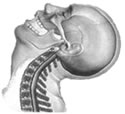 A car is stopped for a light when it is unexpectedly rear-ended causing little or no damage to either vehicle. Nevertheless, the passengers of the struck vehicle complain of neck, shoulder and back pain. Insurance claim representatives, attorneys, medical, engineering and biomedical experts are then brought in and various conflicting allegations, testimony and opinions are expressed. Insurance literature sources claim that 1/3 of such cases are fraudulent, yet, there is a body of research indicating that low speed impact involving non-damaged vehicles can lead to permanent injury. Do we have a legitimate injury claim on our hands or a situation of fraud? Technology Associates can resolve such matters through scientific analysis.
A car is stopped for a light when it is unexpectedly rear-ended causing little or no damage to either vehicle. Nevertheless, the passengers of the struck vehicle complain of neck, shoulder and back pain. Insurance claim representatives, attorneys, medical, engineering and biomedical experts are then brought in and various conflicting allegations, testimony and opinions are expressed. Insurance literature sources claim that 1/3 of such cases are fraudulent, yet, there is a body of research indicating that low speed impact involving non-damaged vehicles can lead to permanent injury. Do we have a legitimate injury claim on our hands or a situation of fraud? Technology Associates can resolve such matters through scientific analysis.
Expertise
We have extensive experience in many aspects of low speed impacts including:
- Testing and analysis of whiplash
- Development of software for rear-end collisions based on bumper damage (including SAE publications)
- Extensive whiplash reference library
- Simulation of whiplash occupant motion using NHTSA software
Questions Answered
Through scientific analysis, we can help you answer pertinent questions such as:
- How fast was the car moving at impact based on the damage?
- Could the impact have caused the alleged injuries?
- Why was one car's damage much more than the other's?
- Were the headrests and seatbelts important to the occupant injuries?
Case Examples
Rear-end TMJ Injury:
A woman driver was stopped at a red light when she was struck from behind by another vehicle causing $950 damage to the front car but no visible damage to the rear vehicle. The front driver sustained neck and jaw (TMJ) injuries from the impact. Based on Consumer Reports bumper tests, we showed that the damage was consistent with a 10-14 mph impact, which generated a peak head acceleration of up to 24 g's, consistent with the driver's injuries.
SUV Low Speed Impact:
An SUV Driver was stopped at a red light when he was rear-ended by another SUV causing $800 damage to his vehicle but no damage to the rear vehicle. The struck driver claimed to have suffered a lasting shoulder injury as a result of the impact. Based on bumper basher test data and other evidence, we demonstrated that the closing speed must have been 4-6 mph, resulting in peak chest accelerations of only 3-4 g's for the front driver, which was inconsistent with the injuries claimed.
Kristopher J. Seluga, PE, is a Mechanical Engineering, Accident Reconstruction, Biomechanics, and Safety Expert with over 20 years of experience. He received his Bachelor's and Master's degrees from the Mechanical Engineering department at MIT where he worked on the development of novel three-dimensional printing technologies. Mr. Seluga is also a licensed Professional Engineer in New York and Connecticut, and has served as a member of the ANSI engineering committee for the Z130.1 and Z135 standards for golf cars and PTV's. His research interests and peer reviewed publications span the topics of Motor Vehicle Dynamics, Product Safety, and Biomechanics.
©Copyright - All Rights Reserved
DO NOT REPRODUCE WITHOUT WRITTEN PERMISSION BY AUTHOR.



 A car is stopped for a light when it is unexpectedly rear-ended causing little or no damage to either vehicle. Nevertheless, the passengers of the struck vehicle complain of neck, shoulder and back pain. Insurance claim representatives, attorneys, medical, engineering and
A car is stopped for a light when it is unexpectedly rear-ended causing little or no damage to either vehicle. Nevertheless, the passengers of the struck vehicle complain of neck, shoulder and back pain. Insurance claim representatives, attorneys, medical, engineering and 






